The history of nuclear power’s imagined future: Plutonium’s journey from asset to waste
By William Walker | September 7, 2021
The history of nuclear power’s imagined future: Plutonium’s journey from asset to waste
By William Walker | September 7, 2021
Two histories of nuclear power can be recounted. The first is the history of the active present. It tells, amongst other things, of the technology’s evolution and role in electricity production, its military connections, installed types, capacities and performance of reactors, their fuelling and spent fuel discharges, their accidents, the supplying, operating and regulating institutions, and the involvement of states. The second is the history of the imagined future. It tells of how, at particular moments, nuclear power and much connected with it have been imagined playing out in years, decades, and even centuries ahead.
Plutonium’s history, of each kind, and its legacies are the subject of a recent book by Frank von Hippel, Masafumi Takubo and Jungmin Kang.[1] It is an impressive study of technological struggle and ultimate failure, and of plutonium’s journey from regard as a vital energy asset to an eternally troublesome waste.
Toward heaven or hell? The conflict over plutonium’s future
The book opens with the discovery of plutonium in the early 1940s and the precipitous development of its related technologies—weapons and production systems—during the World War and ensuing Cold War. Its future civilian role was only glimpsed early on. This changed in the 1960s and 1970s when the imagined future of nuclear power, with plutonium at its heart, acquired an extraordinary potency, becoming a source of serious division and conflict within societies and between states. At issue was the great expansion of nuclear electricity supply proposed by research and development labs, industries, and governments in many countries. To sustain the expansion, a transition had to be engineered, it was insisted, from uranium-fueled “thermal” reactors (mainly light-water) to plutonium-fuelled “fast-breeder” reactors, which would “breed” more fuel than they consumed, allowing societies to free themselves from constraints on uranium supply and from price inflation as demand increased. This transition required immediate, resolute, and heavy commitment of resources, starting now, to develop and demonstrate fast reactor technology and establish the industrial means (that is, reprocessing of spent fuel from thermal reactors) of providing the stocks of plutonium needed to charge up fast breeders. The year 2000 was often identified as when the “plutonium economy” had to be up and running.[2]
A future heaven of technological grandeur and deliverance from energy scarcity found itself pitted against an imagined, two-part hell: nuclear weapons proliferation, as separated plutonium became widely available from reprocessing plants that were outside inspection regimes or hard to safeguard; and eternal vulnerability to fast reactor accidents and the release of deadly radionuclides. The debate was enlivened by competing visions of energy futures (“hard” paths that emphasize large-scale, centralized production facilities versus “soft” paths that center on smaller, distributed, renewable sources), of policies towards the management of reactor fueling and discharges (once-through versus closed fuel-cycles) and of approaches to the containment and eventual disposal of radioactive wastes.
The argument over nuclear futures became an international storm when the United States—champion of civil nuclear expansionism and main provider of nuclear technologies and materials—reversed course and mounted a campaign to halt reprocessing and the development of fast breeder reactors. Spurred by oil crisis, the nuclear visions conjured by the World Energy Conference and other seemingly authoritative bodies created panic in Washington after India had used civil plutonium in its test explosion of 1974. Before me is a typical study from the period. Its central scenario anticipated that global reactor capacity of 2,550 gigawatts (GW), including 394 GW of fast reactors, would have been installed by 2020 (today’s reality is 420 GW with no fast breeders).[3] Seventeen countries would require substantial plutonium stocks and access to reprocessing by that date.
The US government’s aggressive discouragement of reprocessing and fast breeder reactor programs was fiercely criticized abroad. The Ford and then Carter administrations, backed by Congress, were accused of striving to kill the nuclear future by imposing constraints, often by extraterritorial means, on civil production, trade, and development in the nuclear sphere, and by encouraging anti-nuclear movements across the world.
In defiance, France and the UK launched ambitious programs to build large-scale reprocessing plants to supply plutonium for fast breeder reactors at home and in other Western industrial countries—notably Germany and Japan—that needed time to establish their own capabilities.[4] By the early 1980s, binding contracts and intergovernmental agreements had been signed. A circulatory system was envisaged in which spent fuels would be reprocessed in France and the UK and their products returned to the countries of origin, enabling the steady distribution of plutonium for the launch of fast reactors.
Unable to prevent this from happening, the United States shifted to a policy of, in effect, containment by gaining agreement on the reprocessing system’s scope and regulation. Being nuclear weapon states, France and the UK were granted de facto recognition as nuclear-reprocessing-states, to coin a term, with Germany and Japan, uniquely among non-nuclear weapon states, granted rights as nuclear-reprocessing-states-in-waiting. Rigorous safeguards and physical protection measures would be applied, no transfers of reprocessing technology would occur to states outside the Western alliance (and some within it, including South Korea), and the US would retain consent rights over the reprocessing of certain spent fuels delivered to France and the UK. France’s agreement to apply strict export controls, including cancellation of plans to transfer reprocessing technology to Pakistan and other “countries of concern,” and to act “as if” it were a member of the Non-Proliferation Treaty (France did not join until 1992) helped to calm US nerves.[5]
A binary nuclear system was thus instituted in the late 1970s and early 1980s. One entailed the “total reprocessing” of spent nuclear fuels from installed thermal reactors. It was dedicated to realization of a plutonium-fueled future, albeit restricted to a limited set of industrial countries with two nuclear-weapons-states/nuclear-reprocessing-states at its hub. The Soviet Union provided another hub in the Eastern Bloc, reprocessing spent fuels from satellite countries while keeping separated plutonium and fast breeder reactor development within the Russian heartland. The other system entailed the end of reprocessing and plutonium usage for civil purposes and the adoption of spent fuel storage and disposal as the standard, in effect creating a voluntary and involuntary community of “nuclear-non-reprocessing-states,” marshalled by the United States.
The plutonium future that so gripped the imagination and drove policy in the 1970s, for and against, soon lost credibility. Nuclear power’s expansion stalled as costs rose and accidents occurred, glut replaced scarcity in fossil fuel and uranium markets, and cheaper sources of electricity (natural gas and eventually renewables) became available. Fast breeder prototypes also performed badly, and most designs’ reliance on sodium cooling became an Achilles heel. In addition, utilities came to realise that increase in the “burn-up” of uranium fuels enabled greater amounts of energy to be extracted in situ from the fissioning of uranium-235 and plutonium, without the rigmarole of separating the latter.
Although the Reagan administration looked more kindly upon reprocessing than its predecessors, nuclear power’s downward trend and the confinement of reprocessing to a handful of allied countries allowed Washington to relax and cease campaigning to end the activity, other than in countries that sought nuclear weapons. Concern also shifted in the 1980s and 1990s from reprocessing to centrifuge enrichment of uranium, and from power programs to clandestine activity, as the likely routes to weapon acquisition.
From creation of a future to preservation of the present
Construction of the British and French reprocessing plants at Sellafield and Cap de la Hague proceeded throughout the 1980s.[6] Their primary justification—preparing for the introduction of fast breeder reactors—had lost all credibility by the time of their completion. The German, British and French breeder programs had been cut back, soon to be abandoned, and in 1988 Germany cancelled plans to build its own bulk reprocessing plant at Wackersorf. Although Japan’s confidence in its fast breeder reactor program also waned, it was kept alive to avoid disrupting construction of the reprocessing plant at Rokkasho-mura.
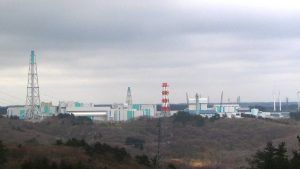
Faced by the plutonium economy’s demise, reprocessing was re-purposed by its supporters to provide the industry and its governmental backers with reason not to do the obvious—abandon ship. Creating an essential future was replaced by a rationale designed to preserve and activate the newly established reprocessing infrastructures. It had two strands. A techno-economic rationale: the separation and concentration of radioactive wastes into different streams had adherent advantage, when it came to disposal, over their retention in unreprocessed spent fuel; and plutonium’s energy value could be realised through its replacement of fissile uranium in “mixed-oxide fuels” for use in existing thermal reactors (the practice of plutonium-recycling).[7] And a politico-economic rationale: The costs and risks of extrication from reprocessing commitments would exceed those of continuation, its difficulties aggravated by the political, legal, and contractual entanglements that had developed since the projects’ inception.[8]
Utilities became casualties of this shift in approach. Japanese utilities spoke of the “plutonium pressure” to which they would be subjected as plutonium extracted from their spent fuel was returned for insertion in operating thermal reactors, rather than being held in store for future fast breeder reactors. Reprocessing contracts had been entered into partly to relieve the spent fuel pressures building up at reactor sites and to avert the need to expand storage capacities there. They found themselves compelled by contractual obligation, threat of spent fuel’s return, and state-backed arm-twisting to shoulder the increasingly severe costs of reprocessing and engagement with plutonium recycling.
Thirty years after the Euro-Japanese reprocessing/recycling system’s launch, the experiment can only be judged a failure. The reasons are set out in persuasive detail in von Hippel, Takubo and Kang’s book. It is a system undergoing irreversible contraction after a long struggle, involving heavy expenditure and many troubles. Germany and the UK have already exited, the UK shutting its THORP reprocessing plant in 2018 and delaying its Magnox reprocessing plant’s closure only because of the coronavirus pandemic.[9] Instead, its Nuclear Decommissioning Authority has been given the costly (more than $138 billion) and long-lasting (more than 100 years) task of returning Sellafield and Dounreay to “green-field sites.”
Japan’s engagement with reprocessing and plutonium recycling was already deeply troubled before the Fukushima accident closed reactors: The Rokkasho-mura reprocessing plant was operating only fitfully, MOX recycling was not happening, and plutonium separated from Japanese spent fuels in France and the UK was marooned there, probably indefinitely, by inability to manage its return in MOX fuel (cutting a very long story short).[10] The declared intention to soldier on with bulk reprocessing seems increasingly bizarre and is surely unsustainable. Although there has long been speculation that Japan’s plutonium policies have been buttressed by a desire to maintain a military option, von Hippel and his colleagues attribute the stubborn commitment to reprocessing at Rokkasho-mura mainly to utilities’ dependence on the site for spent fuel storage and the matching dependence of the Aomori Prefecture, where it is located, on the income and employment attached to reprocessing.[11]
Among the involved countries, only France can claim success insofar as its reprocessing plants have kept running, and it has displayed, unlike the UK, some command of the technology of MOX fuel fabrication.[12] However, rates of plutonium separation and recycling have seldom matched, leaving growing surpluses, and results have been achieved only through heavy subsidy, higher electricity tariffs and disguise of true costs. France’s national utility EDF, saddled with enormous debts, is striving to reduce its exposure to reprocessing. It is symptomatic that no spent fuel discharged from EDF-owned and -operated reactors in the UK, including those under construction at Hinkley Point, will be reprocessed.
The Euro-Japanese reprocessing/recycling system has therefore shrunk to one country (France) serving only domestic requirements at a gradually diminishing level, and another country (Japan) pledged to persist with reprocessing and recycling but without any real activity. Contraction has become the embedded dynamic. The move away from reprocessing is being accompanied by a transition towards dry-cask storage of spent fuels. It entails their removal from water pools at reactors after a few years’ cooling and their insertion in large concrete or stainless steel containers, the former pioneered by the US and the latter by Germany.[13] The Fukushima accident in 2011 has lent urgency to this transition, long advocated by von Hippel. Many reactors were constructed in the 1960s and 1970s without large spent fuel storage, expecting that spent fuels would be routinely transported to reprocessing sites after initial cooling. “Dense-packing” of water pools became common as utilities sought to reduce reliance on reprocessing. As described in the book under review, it was only luck—a leak of water into the pool from an adjoining reactor well—that prevented a greater catastrophe at Fukushima when a spent fuel store lost its coolant.[14]
Despite Europe’s retreat from reprocessing, von Hippel, Takubo, and Kang express worry that it remains alive, with its centre moving to Asia where investment in nuclear generating capacity is strongest. Reprocessing continues in India and Russia, if fitfully, where fast reactor programmes are still being funded. Japan’s commitment remains. Although none of these programs has significant momentum, they drag on. South Korea has also long expressed a desire, against US and other foreign objection, to embark on pyroprocessing of its spent fuel, a novel technique.
There is particular concern about China’s engagement with reprocessing and its dual civil and military purposes. Its “demonstration” reprocessing plant (twin units each rated at 200 tons of heavy metal) appears to have been designed to serve two 600 MWe fast breeder reactors under construction on the coast that may, like India’s, provide weapon-grade plutonium from uranium blankets besides serving putative civil needs.[15] The military aspect of China’s reprocessing program may explain why its reporting of civilian plutonium stocks to the IAEA under the Plutonium Management Guidelines ceased in 2017, when a pilot reprocessing plant began operating. There is worry that China’s investments in reprocessing and fast reactors are serving desires to expand weapon arsenals, adding to insecurity in East Asia and strengthening Japan and South Korea’s interest in plutonium separation that China has long sought to discourage. As so often in the past, claims of civil requirement can mask military intention, increasing the importance of puncturing the myth of separated plutonium’s economic utility.
Might China become the France of the future, a country with a heavy state-backed commitment to reprocessing and a dogged defender of the separation and usage of civil plutonium? At home, perhaps, but its regional concerns will surely cause it to be circumspect in its advocacy abroad and quest for foreign contracts. Whether it can succeed technologically where others have failed, not least in overcoming the fast breeder reactor’s many difficulties, is also highly questionable.
Separated plutonium is a waste
The authors remind readers of the persistent dangers that reprocessing poses to public safety and international security: the risks of accident and exposure to radiation, the proliferation of weapons, the possibility of diversion into nuclear terrorism, and the undesirable complication of radioactive waste disposal. “In our view, it is time to ban the separation of plutonium for any purpose” (their italics) is their concluding sentence. This may be the case, but the US and other governments are unlikely to respond to their call. They have so much else to contend with—climate change, pandemics, economic distress, arms racing on a long list—leaving a ban on plutonium separation low in their priorities. They are also all too aware of past failures to institute such bans, whether in commercial or military domains, from the Carter Policy in the 1970s to the stalled Fissile Material Cutoff Treaty in the 1990s and subsequently.
Another conclusion cries out to be drawn from this book. Plutonium’s separation and usage for energy purposes was an experiment that can now decisively be pronounced a failure. Experience has shown that separated civil plutonium is a waste. The book’s first of many figures, reproduced here, is the most telling. Up to the mid-1980s, the global stock of separated plutonium was predominately military and held in warheads, peaking at around 200 tons. It now exceeds 500 tons. The increase is due to the ballooning of civil stocks as plutonium’s separation has outstripped consumption. The global stock of separated plutonium now includes material extracted from the post-Cold War dismantlement of Russian and US nuclear warheads that is also effectively a waste.[16]
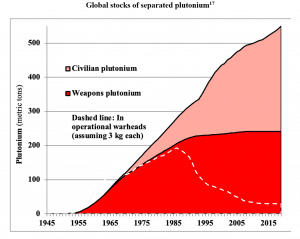
Global stocks of separated plutonium[17]
The figure tells us that separated plutonium has no market clearing price. Utilities shun its usage because MOX fuel is intrinsically more expensive to manufacture, by several multiples, than uranium oxide fuels because of plutonium’s radioactivity and the consequent need for extensive shielding. This applies even when the cost of reprocessing is excluded from price calculations, as has been customary. Spent MOX fuel also contains a more toxic cocktail of radionuclides than spent uranium fuels, creating more hazards and complicating storage and disposal.
Civil plutonium is therefore not an asset, it is not “surplus to requirement;” it is a waste. This is the message that needs to be proclaimed and acknowledged, especially by governments, utilities, and industries desiring that nuclear power have a solid future and make a contribution to the avoidance of global warming. For reasons set out in von Hippel’s recent article in the Bulletin, Bill Gates is deluded in believing that the plutonium-fuelled, sodium-cooled, “Versatile Power Reactor” in which his company Terrapower is involved, has a commercial future.[18] His support is also unwelcome insofar as it helps to perpetuate the myth that plutonium is a valuable fuel, posing acceptable risks to public safety and international security. Reprocessing is a waste-producing, not an asset-creating, technology. It adds cost rather than value. It merits no future when seen in this way.
Even if all civil reprocessing ceased tomorrow, the experiment would have bequeathed the onerous task of guarding and disposing of over 300 tons of plutonium waste, and considerably more when US and Russia’s military excess is added in. Proposals come and go. Burn it in specially designed reactors? Blend it with other radioactive wastes? Bury it underground after some form of immobilization? Send it into space? All options are costly and hard to implement. Lacking ready solutions, most plutonium waste will probably remain in store above ground for decades to come, risking neglect. How to render this dangerous waste eternally safe and secure is now the question.
Disclosure
Preparation of this essay for the Bulletin of the Atomic Scientists was suggested by Zia Mian and Frank von Hippel.
Together, we make the world safer.
The Bulletin elevates expert voices above the noise. But as an independent nonprofit organization, our operations depend on the support of readers like you. Help us continue to deliver quality journalism that holds leaders accountable. Your support of our work at any level is important. In return, we promise our coverage will be understandable, influential, vigilant, solution-oriented, and fair-minded. Together we can make a difference.



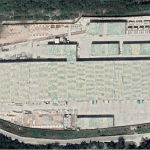




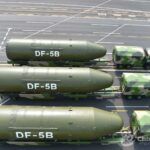


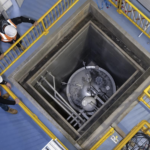

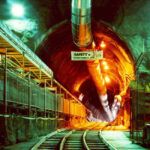








The promotion of SMR’s (small modular reactors of many designs) seems to invariably require enriched fuel. Enriched with separated U235, reprocessed Pu 239, or U 233 from Thorium. If SMR’s are to proceed, the many countires that do not have military enrichment facilities, including Canada, would then be dependent on the nuclear weapons states for enriched fuel.